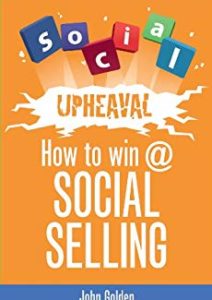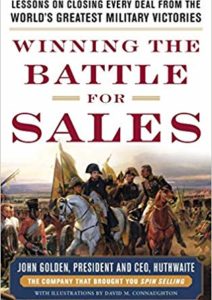I was fortunate to be on a panel discussion hosted by the always excellent Twitter & G+ chat #SSHour> with two of the most enduring sales thought leaders Dave Stein and Barbara Giamanco. While there are so many great takeaways from the session (and you can review the whole recording on YouTube), the one that has really stuck in my mind is that there are
No Shortcuts to Good Social Selling!
Why is this concept so important? Well, as I wrote in a blog post some years back called the Shortcut Culture, we are being bombarded every day (and it is getting worse) with messages from pop culture/advertising and all forms of media that promote the idea that there are shortcuts to everything. Don’t waste your time singing in dive bars and honing your musical craft, nope, get yourself on The Voice, or don’t tread the boards at your local theater, get on a reality show, be obnoxious and get a a TV or movie gig that way. Think about it, the Staples “Easy Button” could almost be the icon for a generation.
Okay, so how is this relevant to selling? Well, on the #SSHour panel discussion a lot of time naturally focused on “Social Selling” which continues to be a very hot topic. And while there has been a lot of hype around the subject and frankly a lot of mixed advice, it is really important that we approach social selling with the same kind of rigor, “traditional” consultative selling requires. All of us on the panel are social selling advocates, I even wrote a book about Social Selling last year and indeed Barb wrote one some years before that. We are also advocates of good selling habits whether online or off. What we are not are shortcut advocates.
If you are tempted for a moment to think that social media is somehow going to take the hard work out of selling, you need to consider what I am about to say because it could save you and your organization a lot of heartaches.
With Great Access Comes Great Responsibility!
The Internet and Social Media gives you, as a salesperson, an unprecedented level of access to information and to people. While at first blush this may seem as a shortcut when compared with the old ways of researching and connecting with people, it most certainly is not. Why? In former times your buyer would have been happy to entertain some foundational/situational questions about themselves or their business because they accepted that were some things you couldn’t otherwise know. Not so anymore, your buyer knows that the majority of this information is freely available to you, so if you have not done your homework (homework = hard work), then they will perceive that you couldn’t be bothered to do the research and now you want them to waste their precious time educating you. Alternatively, if you put the time into researching their business, their industry, the prospect themselves and try to learn as much as you can about what is important to them and can demonstrate that you have done so, you will be perceived as someone who respects them and their time.
Lesson #1: Invest significant time in researching your buyer, their business, and their industry before you engage with them and you will demonstrate professionalism and respect, not to mention you will obviously be better placed to understand how you can help them.
Just Because You Can, Doesn’t Mean You Should!
So we’ve talked research, but now there is a very tantalizing “easy” button sitting right in front of you every time you log in to LinkedIn… that’s right, the big, blue Connect button! Yep, it is right there beside that smiling picture of a prospect and all you have to do is click it and if they accept, whammo! a door just opened. Now all you have to do is stomp right through with a LinkedIn Mail sales pitch. How easy is all that! Too easy! But guess what? It is almost 100% guaranteed that your mail just got deleted and there is an equal chance you just got “unconnected.”
Why so? Well there are a number of things very wrong with this approach. Firstly, have you done your homework (oops, there’s that homework = hard work equation rearing its ugly head again!) and established that this person really fits the profile of your ideal target buyer? Secondly, have you taken the time to look at their LinkedIn activity, what subjects they seem to follow in discussion groups, or posts they share or like to establish what it is they care about?
And finally, have you figured out if you have something of value to provide them that will credential you as someone who can help them? Keep in mind that the big, blue Connect button is not actually the only or even often the best way of connecting. You can comment on their posts or answer questions they may have asked in discussion groups. This is a very good way of starting the connection process that can end up either the prospect sending you a connection request (ideal) or you being able to send them a personalized connection request with some relevant insights of value that will help them immediately.
Lesson #2: Resist the “easy” Connection button! Build a bridge to your prospect through understanding and engaging with them in multiple ways such as commenting, answering questions in forums/groups first.
Noise Annoys!
We have covered research and how to build connections in the right way, the last piece I want to cover is content sharing.
Sharing content with prospective buyers and with your network has quickly become a mainstay of social selling. And rightly so, because it is a great way of providing value and demonstrating that you care and want to help buyers solve their business issues. Now the operative word here is “value” which is often overlooked because sales people get seduced by the notion that quantity matters (and by the way, isn’t it cool that I can use a tool to schedule all my posts/shares/tweets at one time and they will just light up the social networks throughout the day). Best of all sales people have learned that they don’t have to create the content, they don’t even have to wait for marketing to create it!
Nope, there is this great concept called “content curation.” All you have to do is a quick search, find a bunch of content related, however tangentially, to your product/service or the market you sell into and blast out those shares. Fantastic, eh? Well, no it isn’t. If you are not reading the content, contextualizing it for your audience and adding some commentary of value, then all you are doing is “Social Spamming” not “Social Selling.” Comes back to hard work again. You need to source relevant content that you believe your target buyer will find useful, then you need to comment on it and add some insights that enhance the content and credential you, then you can share it. In fact, Rachel Miller wrote an excellent post on this subject on Millennial CEO that I suggest you read before you share any more content!
Lesson #3: Don’t just curate content, contextualize it, enhance and make it directly relevant to your target buyer. And for goodness sake go for quality over quantity. There is enough digital pollution out there already!
So I hope I have sufficiently bludgeoned home my point that Social Selling requires hard work just like any other form of selling. It also requires a greater level of care and consideration because the access social media and social networks give you can be a fantastic way of credentialing you and your organization as thoughtful, value-creators or they can be a catastrophic way of exponentially exposing you and your organization as careless, thoughtless, social spammers.
As they say on all the best game shows: “The choice is yours, my friend!”
Note: I also highly recommend reading Alyson Stone’s post on Social Selling which contains input from a number of sales experts. Also join the #SSHour twitter chat every Monday at 1pm PT, 4pm ET. – Read more













